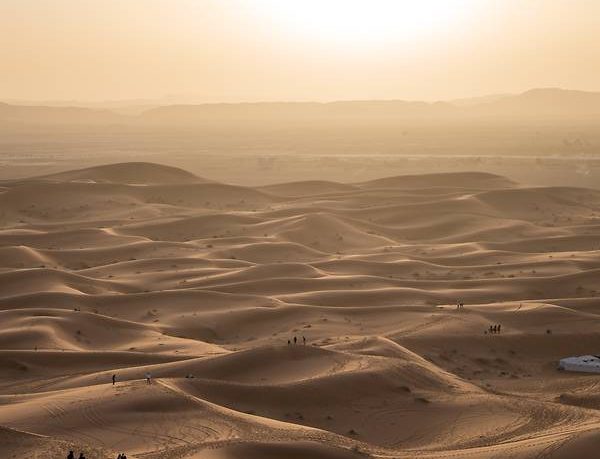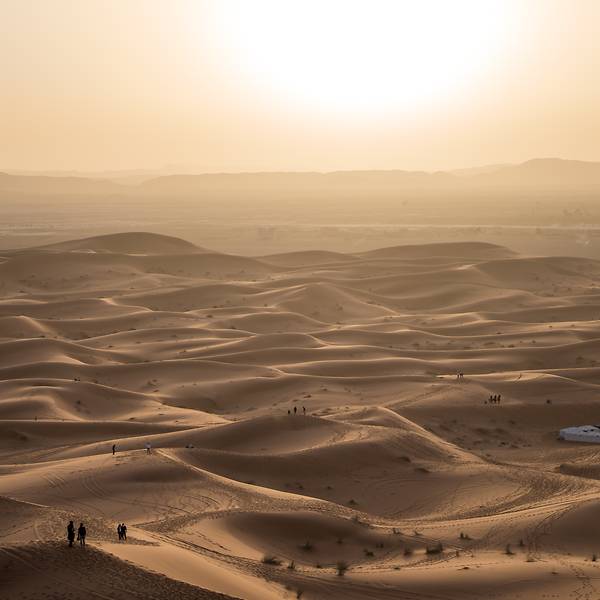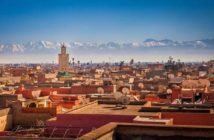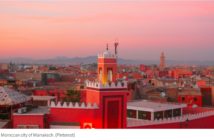CNA Lifestyle
by Hon Jing Yi
The country known as the gateway to Africa is equal parts inspiring, charming and overwhelming.
I sat at the very top of a giant sand dune, soaking in the magnificence that surrounded me. The sun was setting over Erg Chebbi in the Sahara desert, and I watched in awe as humongous mounds of sand – reddish-brown in the light of day – turned into a glorious shade of gold I had only seen in postcards and movies.
It had taken my friend and I nearly two days, by car and then by camel, to get to this point in our journey to the Sahara. We had set off from Marrakech in western Morocco, a city that derives its charm from chaos, with its bustling souks featuring anything and everything from argan oil facial products to snake charmers and monkey handlers.

Our road trip, thankfully, was all about quiet contemplation. Even between naps in our 4×4, I woke up to vastly different landscapes, from the snowy peaks of the Tizi n’Tichka mountain pass through the High Atlas mountains, to rows of traditional mud brick houses in Ouarzazate, to the stunning river canyons of Todgha Gorge. I was fascinated by the sight of nomads who lived in the mountains, riding their donkeys, their goats and sheep and camels grazing nearby.

And then, almost out of nowhere, the sand dunes suddenly came into view, their reddish mounds gleaming in the sun, looking more sublime than words or even photographs could express.
SLEEPING IN STYLE IN THE DESERT
One bumpy, 30-minute camel ride later, we arrived at our lodgings for our night’s stay among the dunes. Before our trip to Morocco, I had contacted over a dozen tour operators, only to discover that “luxury camp” could mean anything from camps with running water and electricity, to camps where a toilet meant a hole in the sand somewhere nearby.

Since I had no intention of baring my bottom in the freezing wintry air, I was relieved to find that my camp was every bit as luxurious as advertised, with comfortable beds, western-style toilets and even hot showers. (We ended up paying 840 Euros, or about S$1280, for a four-day-three-night tour for two.)
Tempting though it was to remain in our cushy camp, my friend and I left immediately to explore the dunes. We huffed and puffed our way up a small sand dune by our camp, marvelling at the way our boots sank with each step.
At the very top, I took a fistful of sand, rubbing it between my fingers, feeling its fine and silky texture, looking in wonder as it fell like molten gold from my hands. I followed with interest the intricate tracks of a small scarab beetle, as it made its way across the sand. When night fell, as the only two guests at our camp, we sat beneath the starry skies and counted shooting stars. I was utterly thrilled to get acquainted with a whole new part of the world I had only read and dreamed of.
NAVIGATING THE STREETS OF FES
The sand dunes may have been an oasis of peace and quiet discovery, but the rest of Morocco was anything but. After another night’s stay in a small town near the edge of the dunes, our driver dropped us off in Fes, a lively, almost disorienting city in northeastern Morocco.

We spent a day exploring the city’s old medina – well, not so much exploring as getting lost. Despite being armed with both (the rather unreliable) Google Maps and a physical map, we got lost on our way to the city’s famed traditional leather tanneries. We ended up wandering around the medina’s maze-like array of big streets and small, unsettlingly quiet alleyways – there are said to be thousands of them – until my friend wisely suggested we followed someone who looked like a tour guide back to the busier streets, which felt safer.

The experience, while exhilarating, was somewhat dampened by the presence of rather persistent men who positioned themselves at every street corner, repeatedly offering unsolicited advice and directions – for a fee of course – adding to the confusion and chaos.
While I never felt like I was in danger, I was overwhelmed at times by the sheer number of people trying to get our attention or invite us into their shops. There was also just too much to see and take in, including live chickens on sale in the middle of the street, men and donkeys carrying heavy loads, shouting at us to get out of the way, and rows and rows of shops selling trinkets of every measure.
SHARPEN YOUR BARGAINING SKILLS
It was at one of these shops where I got my first real lesson in bargaining. I was feeling rather pleased with myself for purchasing a pretty satchel made of camel leather for about 50 percent of the seller’s initial offer. But I quickly learned that I had probably paid too much anyway, when, at a shop selling handwoven goods, I got away with paying only about 25 percent of the asking price for a cashmere scarf and a lovely throw blanket made of cactus silk.
The trick, I learned, was to decide early on the maximum amount I was willing to pay and, more importantly, not feel embarrassed when sellers looked upon my offer with false dismay.

As it turned out, this was a lesson we could apply everywhere, since nearly every transaction in Morocco required a little bargaining. We did our research by searching online or asking locals for a rough sense of what we needed to pay for anything – especially after a man looking after an official telco shop tried to charge us double for SIM cards, and a taxi driver charged us five times more than we needed to pay for a ride in Casablanca.
FALL IN LOVE WITH THE BLUE CITY
Fes was so intense, that it was a huge relief when we finally arrived in Chefchaouen, located about a four-hour bus ride away. The small town is well-known for its picturesque, Instagram-friendly blue buildings in its old medina, and I far preferred its tranquil atmosphere to Fes or Marrakech. We spent a lovely afternoon exploring its nooks and crannies, taking hundreds of photos in the medina. At about 7pm, we made our way up a hill to the Spanish mosque, which offered some stunning views of Chefchaouen at dusk.

Food in Morocco was generally delicious and yet inexpensive, even in the most touristy areas. We had lunch at a lovely restaurant called Bab Ssour in Chefchaouen, which served the most delicious squid tagine I had ever tasted – all for only 45 dirhams (S$6.40) a serving. A regular three-course meal at a restaurant near the iconic Blue Gate in Fes comprising a soup or a salad, a main (typically meat skewers, couscous or a tagine) and fruit cost about 70 dirhams (S$14), and we loved sitting there sipping on Moroccan mint tea after dinner, enjoying some respite from the madness.

But my best food-related memory was that of a small, rundown eatery located in the capital city Rabat, which appeared to be run by friendly, middle-aged women. We had walked in simply because we had been too hungry to walk any further. Despite my initial concerns about food hygiene, I was delighted to discover that they served a lovely chicken and potato tagine. It was simple, homely goodness, and I could easily have believed that it had been prepared by my grandmother – that is, if my grandmother were Moroccan, still alive, and knew how to cook chicken tagine.
And here, almost in the middle of nowhere, was to me the very essence of Morocco. After all, if I had learned anything at all, it was that in this dizzying, fascinating country, the next surprise was always just around the corner – in the tiniest of restaurants, or at the top of a sand dune.








